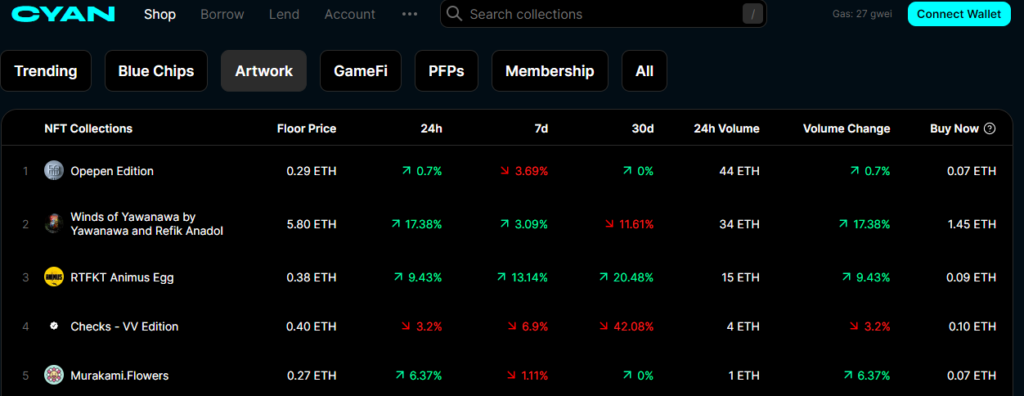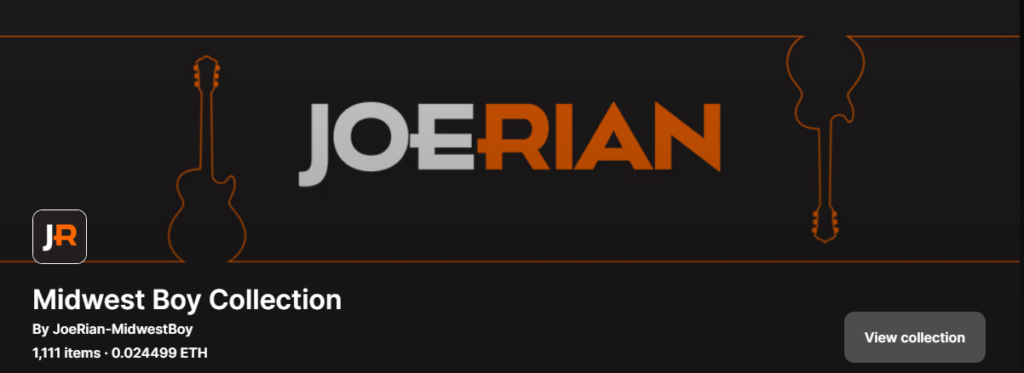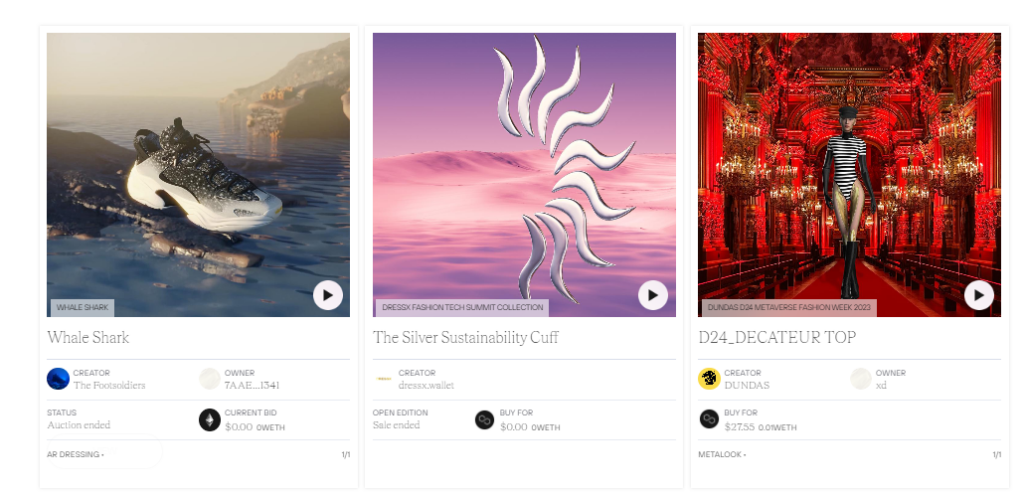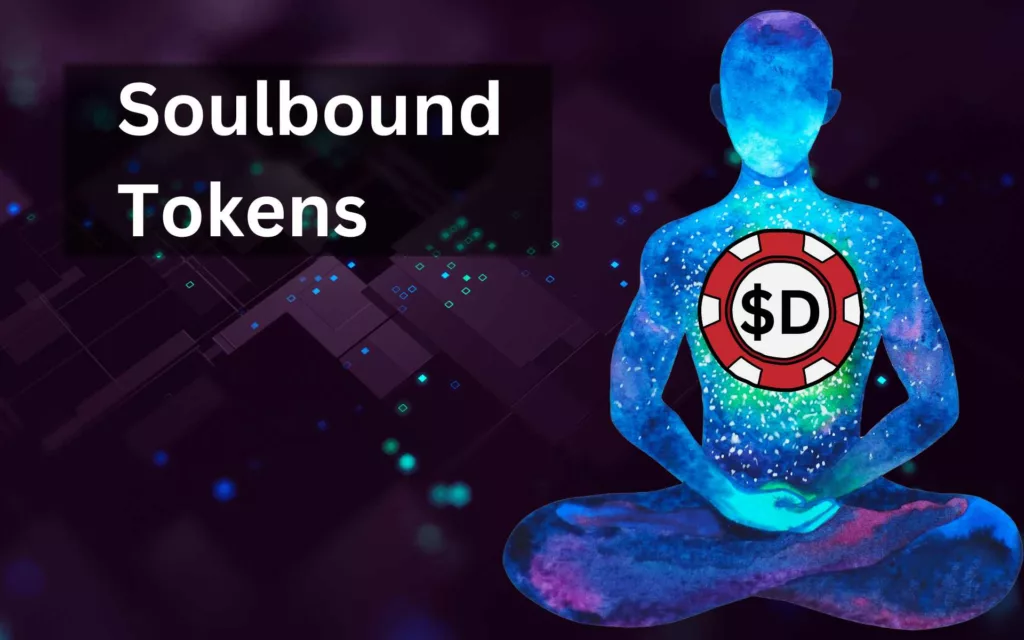Non-Fungible Tokens (NFTs) have finally made out of their rudimentary forms and are now ready to support different industries with the power of blockchain.
By leveraging blockchain technology to certify the uniqueness and ownership of digital items, NFTs offer a novel approach to digital rights management, asset tokenization, and the creation of new economic and engagement models.
Yet, most of these uses remain untapped.
Below are some of the prominent use cases of NFTs that highlight their versatility and potential impact.
Table of Contents
1. Digital Art and Collectibles
The most well-known application of NFTs is in the digital art and collectibles space. Artists can tokenize their artworks as NFTs, ensuring the art’s originality and ownership can be verified. This has opened new revenue streams for artists and created a new asset class for collectors.
Below are the Top 5 Art NFTs on CYAN.

2. Gaming NFTs
NFTs have revolutionized the gaming industry by enabling true ownership of in-game assets. Players can own, buy, sell, and trade in-game items as NFTs across platforms and games. This introduces scarcity and value to digital items, enhancing the gaming experience and allowing players to earn real economic rewards for their in-game achievements.
A few top gaming NFT collections are De-Gods, Axie Infinity, etc.
3. Music and Entertainment NFTs
Musicians and content creators are using NFTs to tokenize their works, from albums to digital experiences. This not only provides a new way to distribute and monetize content but also fosters direct fan engagement by offering exclusive access, limited editions, and unique experiences tied to the NFTs.

Several music professionals have already sold their music in the form of NFTs. Joerian is one such collection for Mid-Western music.
Sound, a music company created a platform where fans can buy early versions of their favorite artists as NFTs.
4. Real Estate and Virtual Land
In virtual worlds and metaverses, NFTs represent ownership of digital real estate. These virtual lands can be developed, rented, or sold, mirroring real-world property dynamics. This has led to the creation of entirely new economic ecosystems within virtual environments.

There are several metaverses which sell digital real estate, some of them are even well known like Sandbox and Decentraland. Though these metaverses are not selling now like hot-cakes, but it also provides us with an opportunity to buy such land assets at cheap prices now.
5. Sports Memorabilia and Fan Engagement
Sports franchises and athletes are using NFTs to create digital collectibles, such as trading cards, highlight reels, and unique fan experiences. This not only opens up new revenue channels but also deepens fan engagement by offering ownership of rare memorabilia and interactive experiences.

Legendary soccer player Ronaldo has been one of the major NFT creator and seller. His NFT collection is named as CR7 (also his jersey number).
6. Fashion NFTs
The fashion industry is exploring NFTs to authenticate and tokenize exclusive designs and merchandise. This ranges from virtual clothing in digital environments to proof of ownership and provenance for high-value physical items, bridging the gap between physical and digital fashion realms.
DressX is one such fashion NFT marketplace.

7. Identity and Credentials
NFTs can represent digital identities, certifications, and credentials, ensuring their authenticity and immutability. This application can transform how personal identification, educational achievements, and professional qualifications are managed and verified online.

Soulbound Tokens are one such application of NFTs where an ERC-721 or ERC-1155 NFT is modified to create a token that stays forever in the wallet.
8. NFTs in Supply Chain
By tokenizing assets and products as NFTs, companies can provide transparent proof of origin, ownership history, and authenticity. This is particularly valuable in industries like luxury goods, pharmaceuticals, and agriculture, where provenance and traceability are critical.
9. Intellectual Property, Laws, and Licensing
NFTs offer a new mechanism for managing and monetizing intellectual property rights. Creators can tokenize their IP, enabling transparent licensing, royalty distributions, and rights management directly on the blockchain.
10. Asset Tokenization
Asset Tokenization is the most important emerging trend in NFTs. Several countries and legal jurisdictions have already started implementing them.
Since a blockchain asset can be verified instantly for authenticity and ownership, financial assets such as homes, property, cars, yachts and much more things can be tokenized which will lead to a lot less instances of fraud.

Colombia has already started the tokenization of real estate and land with Ripple Labs.
Conclusion
The versatility of NFTs extends far beyond digital collectibles, touching nearly every sector that can benefit from transparent, immutable proof of ownership and the tokenization of assets. As the technology matures and adoption grows, we can expect to see even more innovative applications of NFTs that challenge traditional models and pave the way for new forms of digital interaction, commerce, and creativity.

